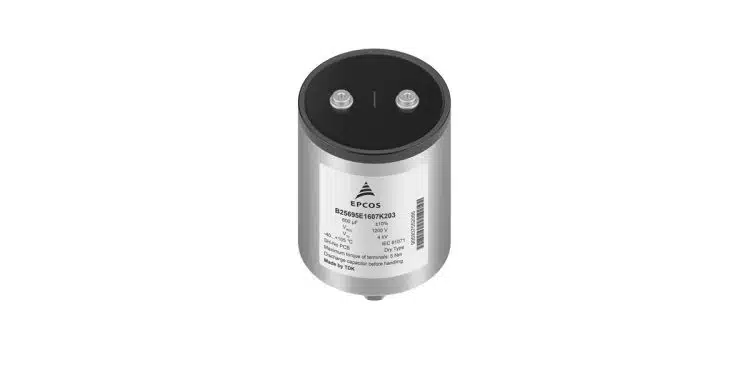TDK Corporation presents a new series of EPCOS power capacitors for DC link applications designed for an operating temperature of up to +105 °C.
The components with the ordering code B25695E can operate at rated DC voltages from 700 V to 1300 V (voltage derating necessary from +85 °C).
The ESR ranges from 1.0 mΩ to 2.7 mΩ, resulting in a current capability of up to 110 A at +70 °C, depending on the model (current derating necessary at higher temperatures).
However, the film capacitors can repetitively withstand current peaks of up to 15.8 kA. At the rated voltage and +75 °C, their service life is 120,000 h – up to 35% more than the standard version.
The cylindrical cases of the RoHS-compatible capacitors with diameters of 85 mm or 116 mm are aluminum and have a synthetic resin lid. The metalized polypropylene film is encapsulated with a dry epoxy resin.
M6 screw terminals ensure a secure electrical connection and an M12 threaded bolt on the bottom side provides a secure mechanical connection.
Typical applications are DC link circuits in converters in renewable energies (photovoltaics, wind power), in rolling stock (train, subway, streetcar), and industrial drives.
Features
- Operating temperature up to +105 °C
- Low dissipation factor
- Overvoltage resistant (130% of the rated voltage every day for 1 minute)
Applications
- DC links for renewable energies (photovoltaics, wind power)
- DC links in rolling stock (trains, subways, streetcars)
- DC links for industrial drives































